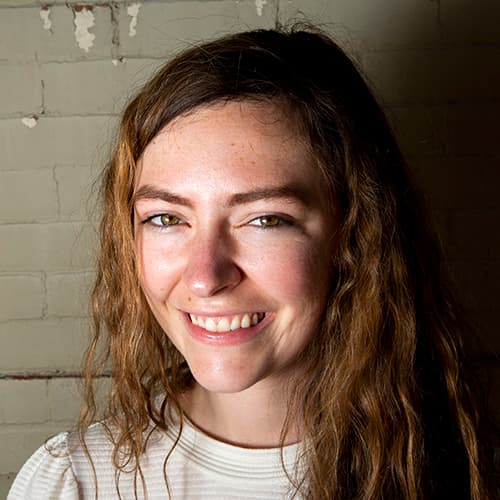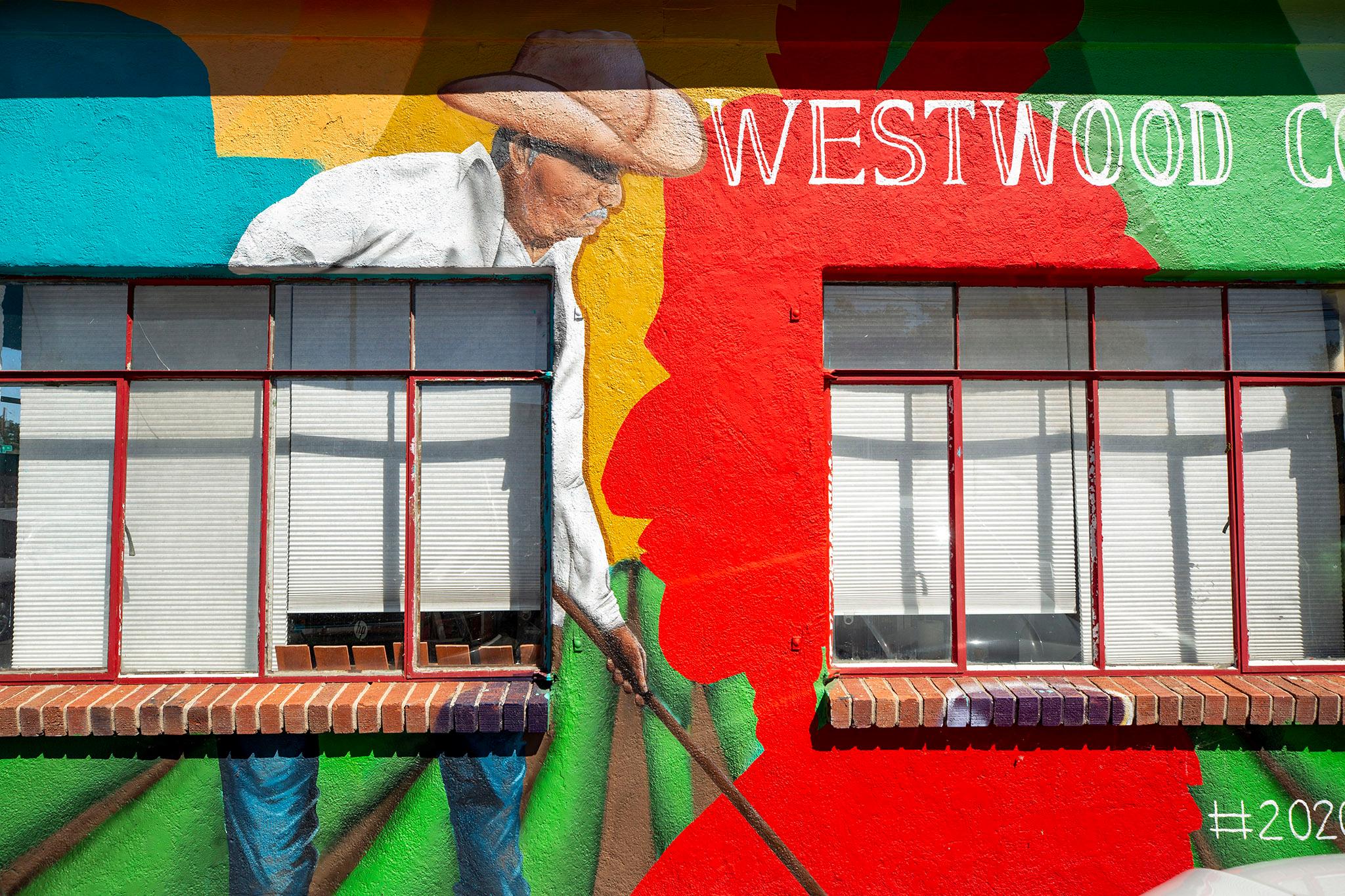Every day, painter Arturo Garcia drives from his home in Littleton to his gallery on Morrison Road. He takes Sheridan Boulevard all the way, and then turns right onto Morrison.
"The first thing that I see is the city of Denver in the foreground, the buildings of downtown Denver. And to my right, I see the panaderia where they make fresh bread every morning, and I see the little tienditas, the little grocery stores that are slowly disappearing," he said. "I see the murals, and I see the Indian Center to my left. And then I see the hard working people opening up their businesses, like the mechanic shops and the Mexican restaurants. And I see people walking to catch the bus, and I see life here -- which, certainly, I don't see where I live."




Garcia grew up in Mexico, but moved to Denver in 1990 when he was very young. He lived in Westwood until he was 18, and said it was much different back then -- that there was a lot of gang activity, and fewer restaurants along Morrison Road.
He moved back to Mexico for several years, only to return to the Denver area as an adult in 2008. At the start of his art career, he shared a rented space at the Denver Art Society in the Art District on Santa Fe. Then, two years ago, as he was searching listings for a studio space of his own, he came across one on Morrison Road.
"I took it right away," he said. Part of the appeal was the changes he'd seen in the neighborhood in recent years -- that with the support of local organizations, Morrison was little by little becoming a home for arts.
But it wasn't only the recent improvements that drew Garcia back to the strip. He saw in the street's close ties to its residents' Hispanic, Native American and Latino roots an authenticity he believed might even elevate his artwork.


"This Westwood, Morrison Road, it's a beautiful community," he said. "I love it. And I've never felt like a foreigner here. Probably, in part because I used to live here many years ago. But even if that wasn't the case, I probably still feel at home because I'm able to see the details. And when you're able to see the details, you can appreciate things at a different level."
Take a walk down Morrison Road and you'll know exactly where you are in Denver.
The tienditas, co-ops, urban gardens, vibrant murals, ofrendas, Frida Kahlo iconography, mechanics, Mexican restaurants, and lively community festivals combine for a feel that is specific to Morrison, the diagonal main street in the predominantly Latino and Hispanic Westwood neighborhood.



On Morrison, there's a certain unity in the art that contributes to a strong sense of place. Most of what you see was created by people who actually live in Westwood, or have close ties to the neighborhood. Julio "JWLC" Mendoza, a muralist who spent most of his childhood in Westwood, said Morrison Road's art manages to beautify the neighborhood without altering its cultural fabric.
"The art here describes a lot of people that live here in the community," he said. "I think many other art districts, they have more variety, different styles and different what the mural represents."
Other areas, like the RiNo Art District in Five Points, have come under scrutiny for bringing artists into an area to beautify it in a way that contributes to gentrification and the eventual displacement of the people who lived there. But while Westwood is experiencing rapid change of its own, much of old Morrison Road -- like the mechanic shops lining the street -- has survived change and development. Mendoza says that part of the reason the street has continued to feel like itself even as new artwork and businesses have popped up is that those businesses, as well as many of the artists who paint their walls, work in collaboration with the community.
"They have adapted to what Morrison Road is, and are not trying to gentrify it, change it in a way that it's totally different. It's just making it better, and working with the community," he said. "I think it's also helping elevate the culture and the traditions that we have."
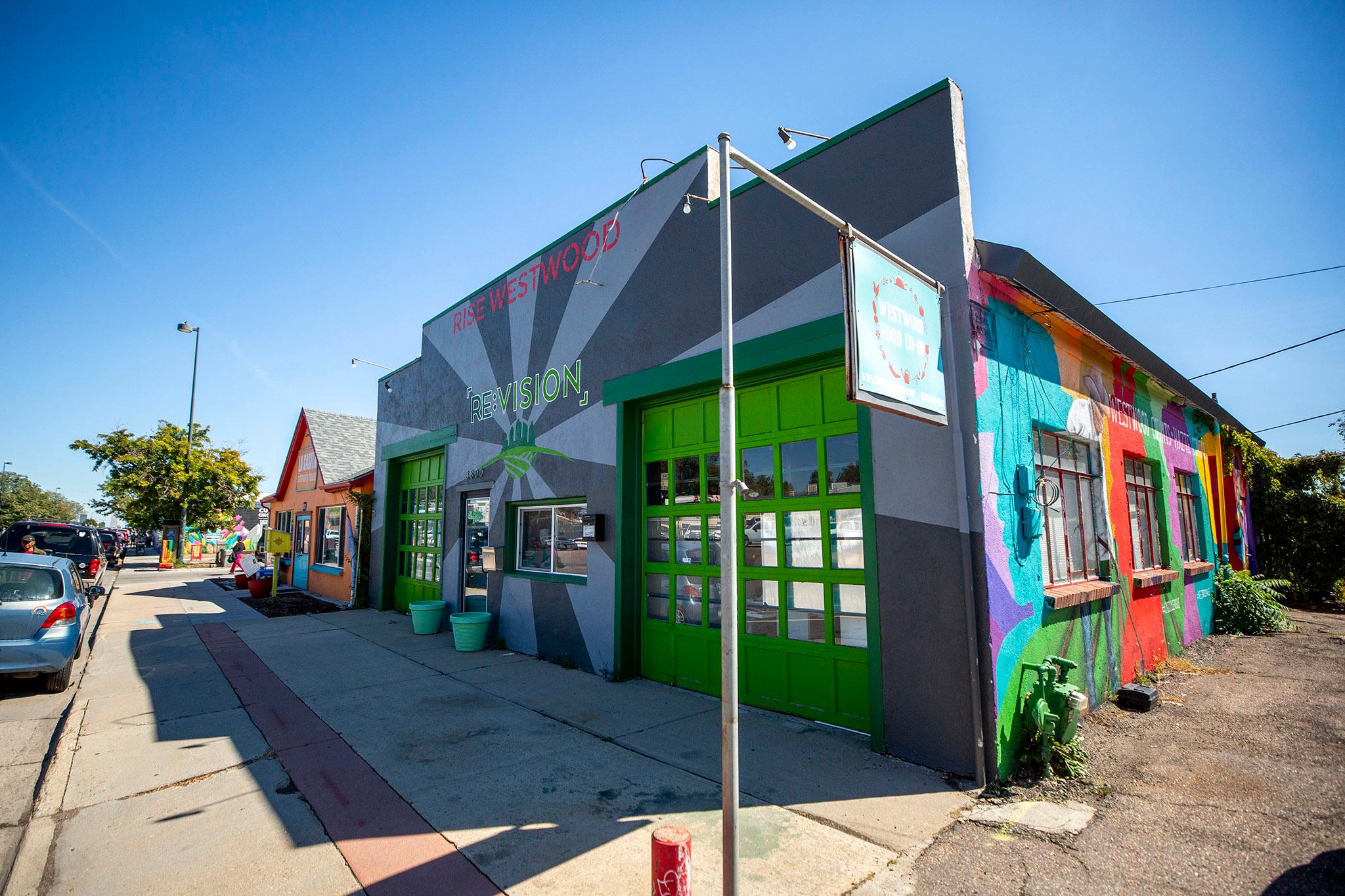
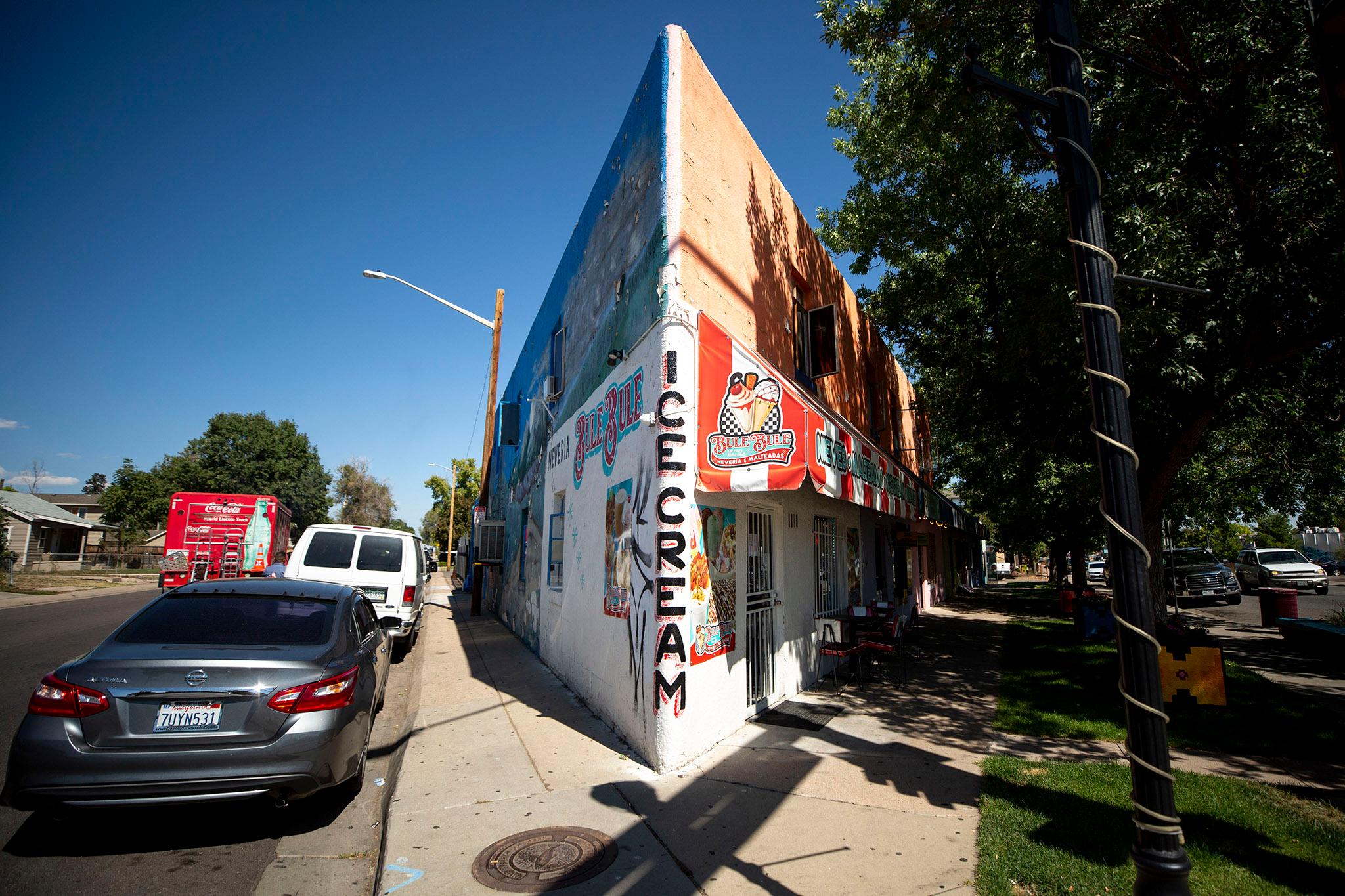
For example, D3 Arts, a nonprofit founded by local artist Santiago Jarmillo, aims to strengthen the community's health and cultural roots through art. And BuCu West Development Association, a nonprofit based on Morrison Road, is dedicated to supporting local businesses and cultural organizations through developments and business opportunities.
Ronit Eisenbach, an architect, artist and professor at University of Maryland who specializes in public art and placemaking, says "sense of place" is the idea that a space has a unique character and set of qualities.
"It's defined by the spatial character, by the materials, by the colors, by the smells," she said. "And our actions in those places and the actions of others often allow us to associate meaning with those places."
She said public art can help shape a sense of place by contributing to an implicit or explicit sensory experience.
"We move through spaces with our bodies. All our senses are engaged," she said. "We respond through our senses. That's what hits us first. So maybe that's the unspoken character of what makes a palace."
Eisenbach says public art can be an affirmation of place -- that built environment, through the careful selection of colors and imagery that reflects the people and cultures of the people who live there, can contribute another layer to our perception of a space, making its identity visible even to outsiders. At its best, she says, that built environment affirms and shapes a place's cultural identity, and vice versa.
Jose Esparza, BuCu West's executive director, said he joined BuCu West with the intention of improving the area in a way that intentionally serves the community that lives there.
2020 Census data shows that 76 percent of Westwood is made up of people who identify as Hispanic or Latinx (down from 80 percent in 2010).
"I didn't think it was right that there are planners building our cities and advocating for neighborhoods, but they didn't represent this portion of the population," he said.
Esparza said when he joined the nonprofit in 2012, there were no murals on Morrison. There was very little art along the corridor at all, except for the massive guitar sculpture at the road's entrance. BuCu West got to work trying to beautify the street and make it more pedestrian-friendly. They started commissioning artists to paint electrical boxes in the maintenance district. They applied for Urban Arts Funds grants on behalf of local artists, and connected artists with local property owners for commissions. Through those projects, artwork started materializing up and down the street.
"We really believed in the fact that art can deter graffiti. It lasts longer, it's more culturally representative," Esparza said. "And we wanted to support local artists economically."
He said the reason the artwork seems to mirror the different backgrounds of people living in the neighborhood is that most of the artists creating work along Morrison are local.

"Although we have had artists from outside of the neighborhood do larger murals, we are really conscious of not trying to support too much from the outside," Esparza said. "Making the main focus supporting artists who are from Westwood, or have a tie -- you know, their aunt grew up here, their mom grew up here, they grew up but left -- have a tie back to Westwood and really want to represent their neighborhood."
Eisenbach, the expert in art, architecture and placemaking, said that focus can make a difference.
"It adds another dimension. Maybe it draws from something that's already there, or maybe it might contrast with it. But it's a nonverbal way of communicating, 'We are there. This is a place,'" she said. "When it's public, it's something we can all see and then it's part of our shared experience. It differentiates that space with another space."
She said that reinforcing a space's sense of place and identity can be a way to preserve it against change.
"It's an affirmation, a kind of placeholding," she said. "This is our place, and it's not just my house. It's a neighborhood."
One of the artists BuCu West has worked with is Mendoza. He said he first moved from Mexico to Westwood in 2001, when he was 11.
"I would walk the streets all the time," Mendoza said. "I was just growing up here, and never imagined that I was going to paint a mural here and start my career here."

He remembers loving art in middle and high school, but didn't realize it was a career he could pursue. Instead, he went on to the University of Northern Colorado and studied criminal justice. He ended up working a job in a windowless office, supervising people in an immigration program. He thought he could do more good by working there than not, and he knew his parents would be proud of him for having an office job. But it was an emotionally intense couple of years. He stopped making art for a while. Maybe, he thought, because he was disappointed in himself.
"It was too much for me. It wasn't making me happy," he said.
After two years, Mendoza quit his job. He traveled a bit, and took on odd jobs before deciding to commit to doing what he really loved -- art. But it's not easy to launch an art career.
"It's like starting all over again," he said. "It's hard to start from zero and then just make something happen. "
One day in 2018, Mendoza stood at the start of Morrison Road, near Lupe's Auto Body on Mississippi and Sheridan. The shop had a big, blank wall. Mendoza didn't have a portfolio or any experience with murals, but he walked to the shop owner and asked permission to paint there.
"He was pretty open to it," Mendoza said. "Like, 'Yeah, as long as you don't paint anything gang related.'"
It was his very first mural, and Mendoza funded it with his own money. It's still there, though marked with a few tags: a colorful depiction of a kid watering a mountain.
After that, he started reaching out to other businesses along the street to see if he could find more opportunities. Someone referred him to BuCu West, and the nonprofit got him into a gallery show with some other artists, and gave him his first mural commission painting electrical boxes on Morrison. One Stop Bike Shop commissioned him to do a mural. Then Re:Vision, and Cultura Chocolate. Now, thanks to his local network and commissions from local community members, he has artwork all over the street, and has become a prominent muralist in the larger Denver art scene.
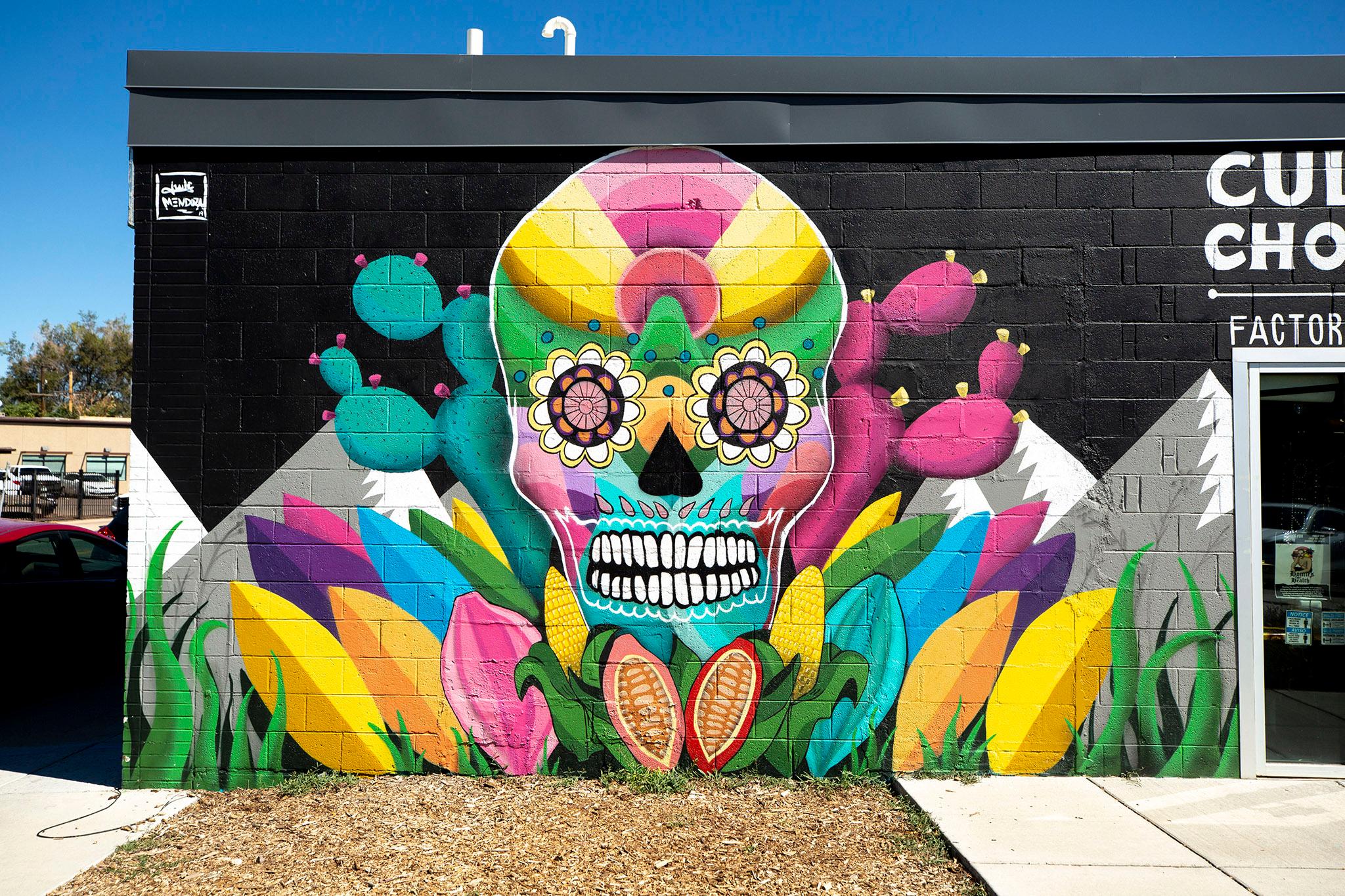
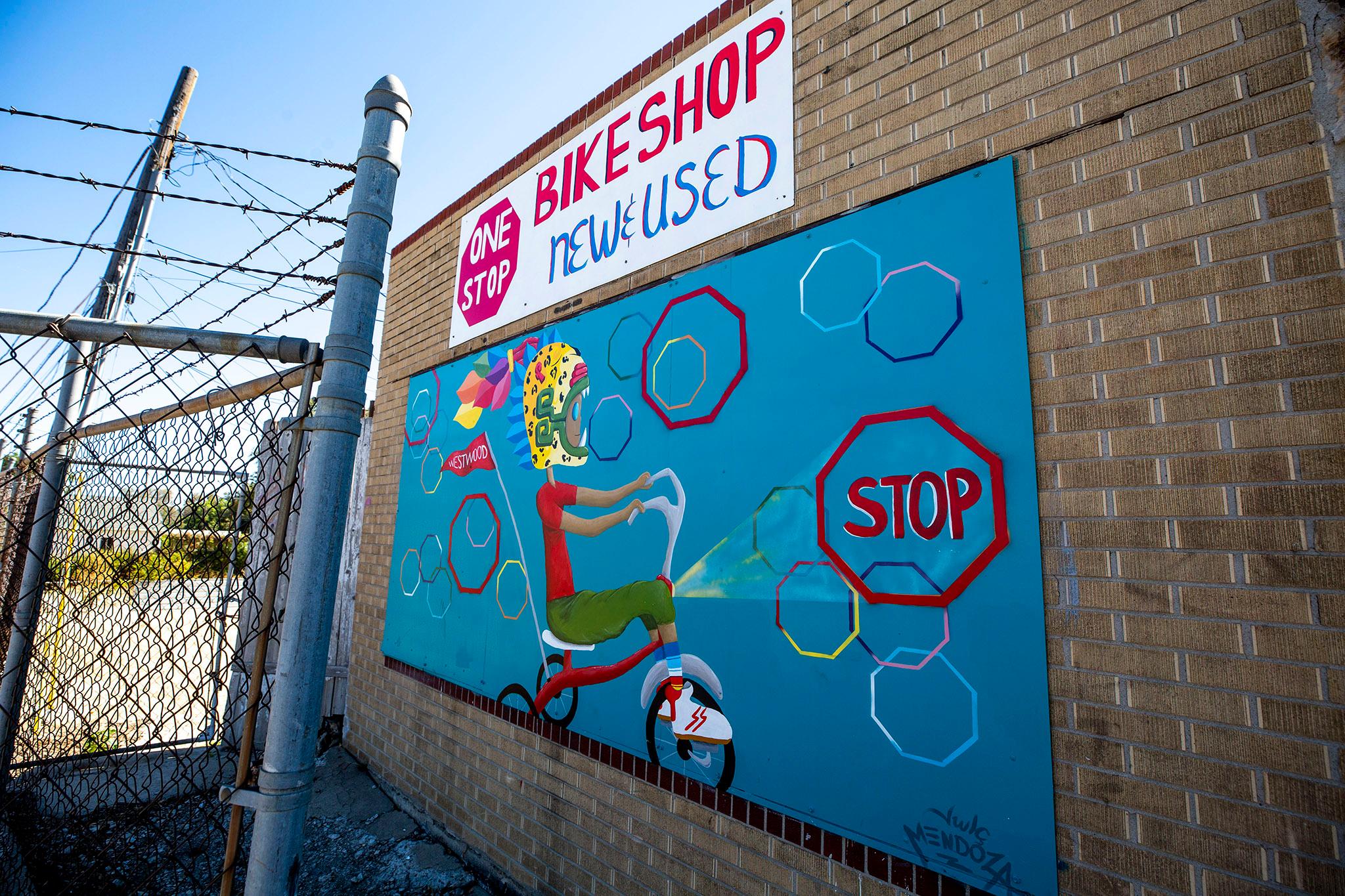
"Growing up here, and then being able to start my mural career here, was a great, great feeling," he said.
Part of what's made it so special is the network of support he's found in the community he grew up in.
"It kind of felt like family support," Mendoza said. "They believe in you. They want to grow."
On Instagram, when he posts photos of his work, he often uses the hashtag #coloresdemigenteproject. He says the phrase "colores de mi gente" is a reminder to himself of an idea he has to start a nonprofit someday to help give kids who're interested in the arts the tools and support and knowledge to pursue their passions. But the hashtag is also a reflection of his painting style, which he says is rooted in the traditions and customs of his people.
"If they feel some sort of connection to it, it's important to me," he said.
Much of his own work is inspired by his memories growing up in Mexico. Some murals feature colorful images of children, calling back to his memories playing outside as a kid. He uses a lot of recognizable cultural elements, like wrestling masks and images of corn.
"There's a lot of color, a lot of flavor in it," Mendoza said. He said many of the artists who work on the road feel a responsibility to create something that represents the people who live in Westwood.
"You always have to be conscious of what community lives here," he said. "Once you paint the wall, it just doesn't belong to you anymore. It belongs to the people that walk by every day going to work, going to school."
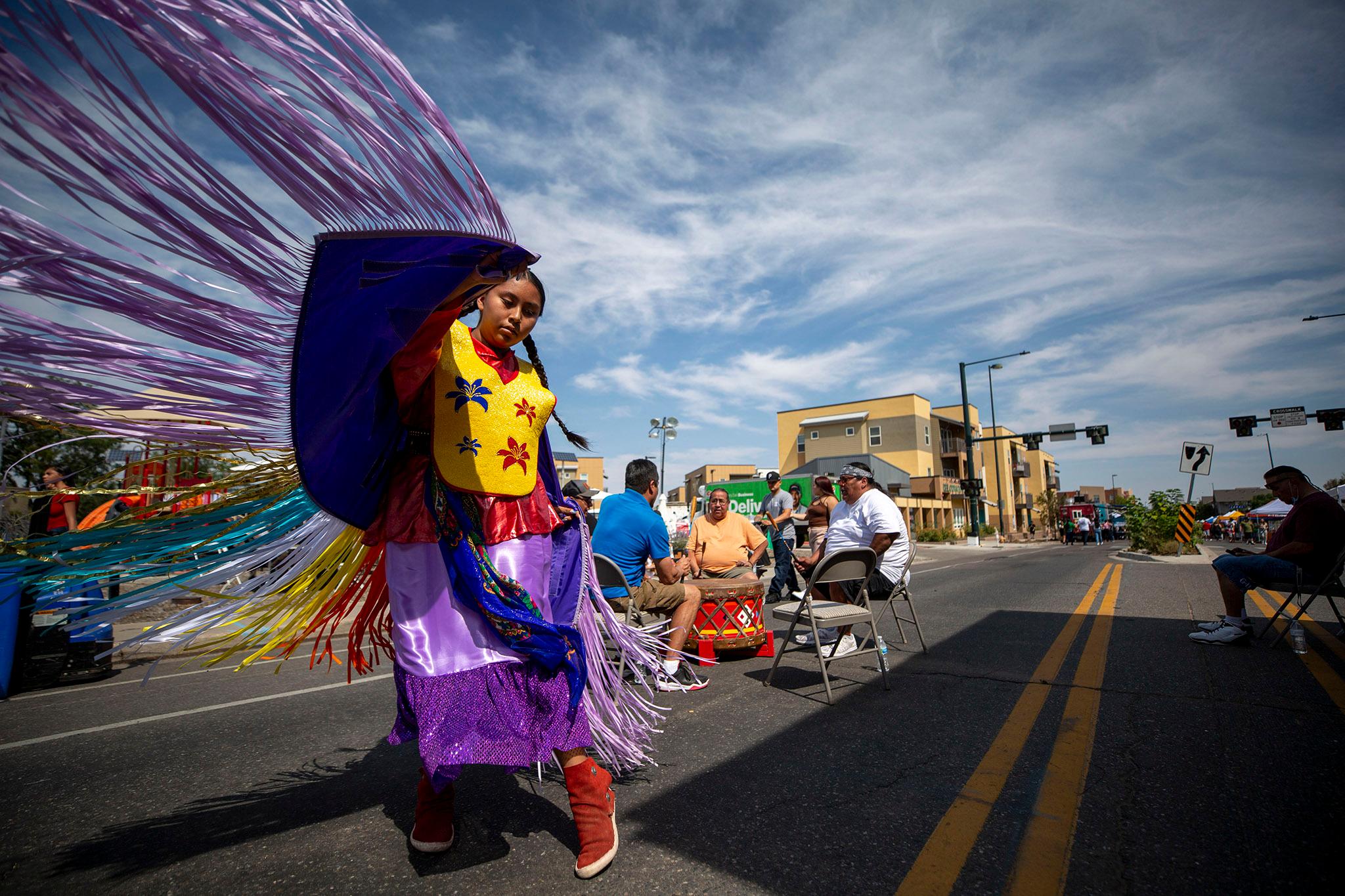
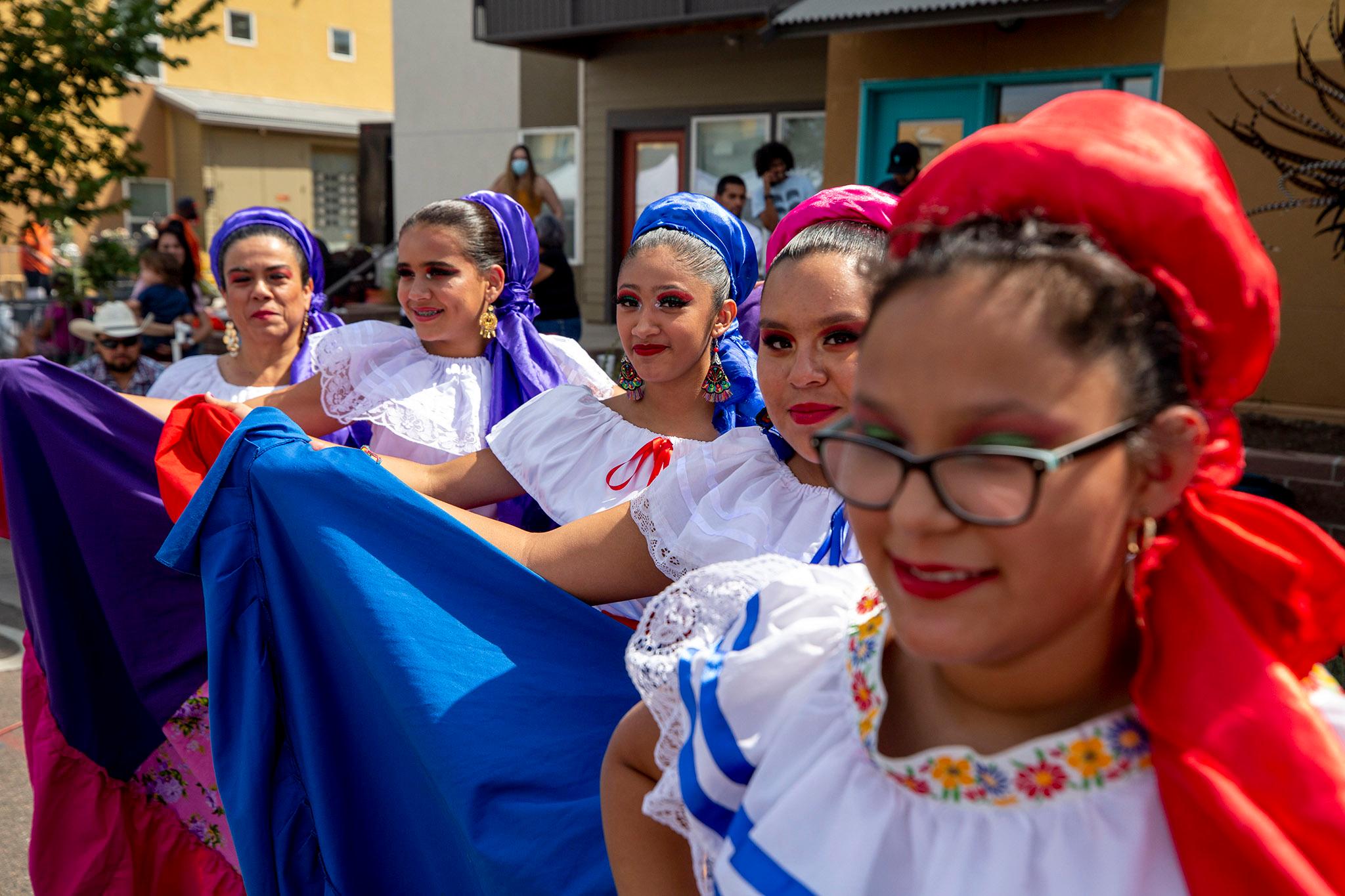
In Garcia's hometown in Mexico, there was a place called Casa de la Cultura. On Saturday mornings, they hosted painting workshops for kids.
They would provide all of the supplies, and kids were allowed to paint whatever they wanted from about 9-noon.
"I would always be the first one to get there. And they would have to ask me to leave," Garcia said. "Those were the best days of my childhood, Saturday mornings."
Now, in his new community on Morrison Road, he saw an opportunity to give back. Inspired by his childhood painting at Casa de la Cultura, he decided to open his studio from 10-11 a.m. on Saturdays for kids to come and paint for free.
"It's a workshop. It's not a class. So kids have the freedom to create whatever they have inside of them. It's beautiful," Garcia said. "Sometimes they come here with the mentality that they're gonna learn from me, but the reality is that I learn from them."

He also started hosting his own First Fridays on Morrison Road in collaboration with BuCu West, inviting musicians and artists to come show their work outside the gallery.
"It's slowly growing to be an event where people have another option besides the First Fridays that are offered by the Santa Fe Art District, RiNo, Tennyson," he said. "Westwood is also doing its own thing, and it's unique. It feels authentic."
He said he wanted to create something positive with his work.
"Change is change, and it happens whether you like it or not," he said. "The thing is, what do I bring? How can I adapt? How can I contribute? If things aren't working out, what can I do to change to make it better?"
Morrison Road has managed to change and grow on its own terms in some ways, strengthening rather than losing its sense of place and ties to its cultural identity. But Mendoza worries it's becoming more attractive to outside developers.
"They don't see what we see. They just see another hotspot neighborhood to completely change," he said. "You don't want every neighborhood to look the same. Everyone has to be unique. I mean, people come here because this is Westwood. Because it feels different than other neighborhoods, other art districts."



Esparza says BuCu West is working to combat cultural gentrification. One way they can do that is by empowering and employing locally as they've been doing, so residents have the resources they need to stay. By investing in local artists and businesses, they also help strengthen the corridor's identity, and its residents' cultural ties to the neighborhood.
"If you see art in the public that is representative of your history, or representative of your children or your community, then you feel a stronger tie to the area," Esparza said. "And potentially that is enough strength there that helps you fight to stay."
Just as Morrison looks vastly different from how it did five years ago, it will look different in another five years. Esparza says they are planning an initiative to turn the street into a sort of linear mercado -- a main street redevelopment that will utilize empty space in front of private properties along Morrison Road to set up kiosks and gathering spaces, creating a denser, more pedestrian-friendly cultural hub. Esparza said the redevelopment was recently included in city bond funds, so that in 2023 the street will see a full reconstruction from Alameda Avenue to Perry Street. And he said that if another bond goes forward in November, the project could stretch to Sheridan Boulevard.
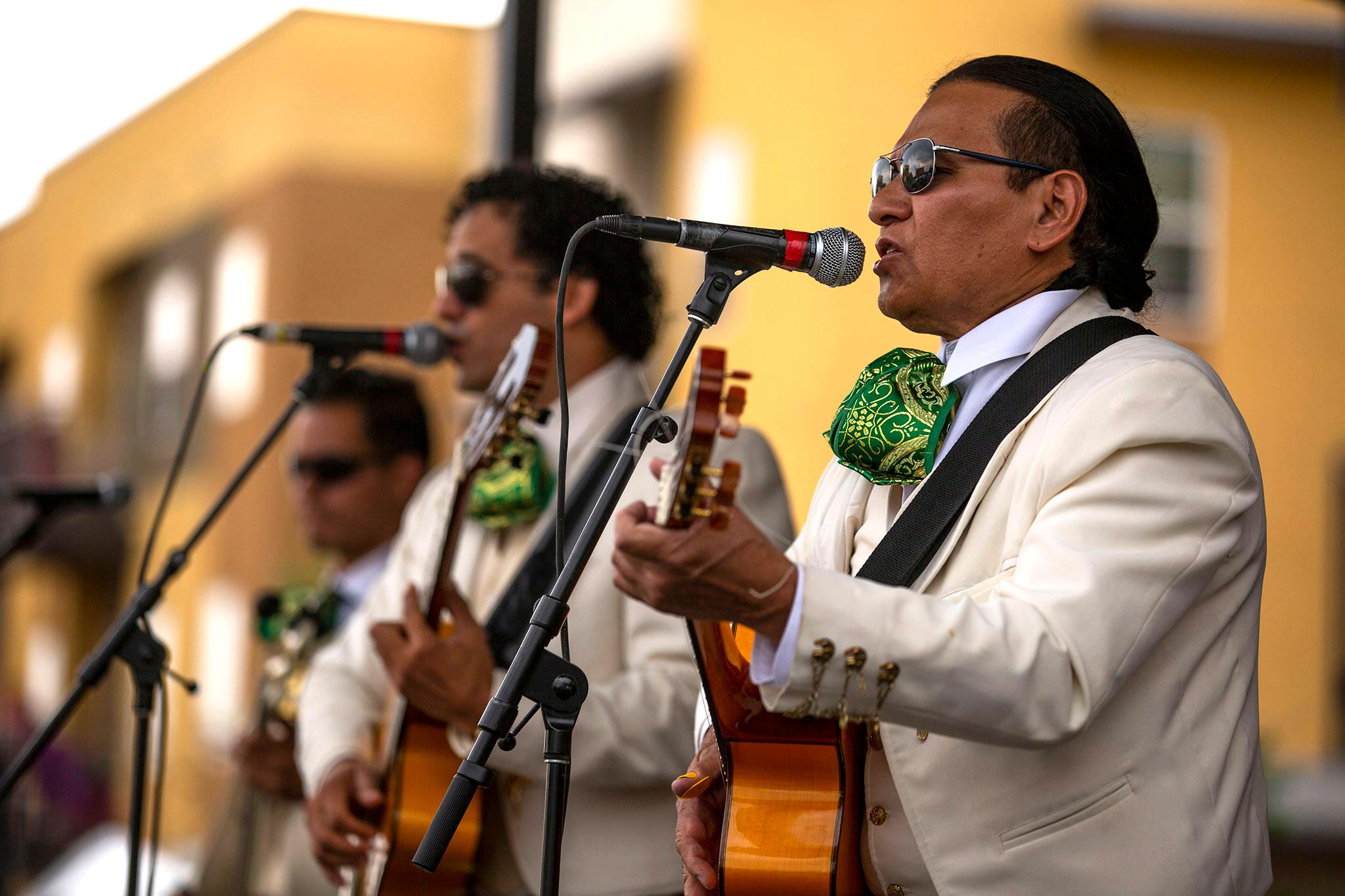

Still, in spite of its rapid growth, Esparza says that as he walks down the street, Morrison feels, to him, fundamentally unchanged.
"Morrison road to me is still very similar to what it was when I first got here. Because it represents a small town to me, a small community that is really intertwined. And we're dependent on each other," he said. "What Morrison Road is doing, and where I hope it's going, is really this safe main street that is always tied in culture."
